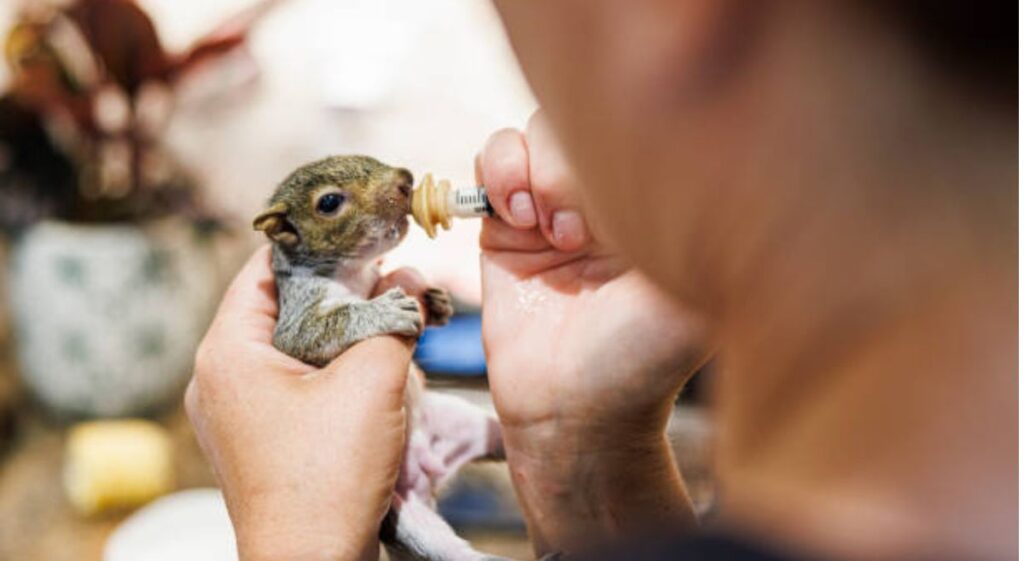Introduction:-
The Benefits of Pet House Sitting Services: Keeping Your Pets Happy at Home

As a pet owner, you know how challenging it can be to find suitable care for your furry friends when you need to travel. Traditional pet boarding facilities might not be the best fit for every pet, especially those who thrive in familiar surroundings. This is where pet house sitting services come in. These services offer a range of benefits that ensure your pets remain happy and stress-free while you’re away. In this article, we’ll explore the top benefits of pet house sitting services and why they are an excellent choice for your beloved pets..
The Benefits of Pet House Sitting Services
1. Familiar Environment
One of the primary benefits of pet house sitting services is that your pets get to stay in their own home. Being in a familiar environment reduces stress and anxiety, which is especially important for pets that are sensitive to changes in their surroundings. They can enjoy their usual routines, sleep in their own beds, and play with their favorite toys, all while under the watchful eye of a trusted pet sitter.
2. Personalized Care
Pet house sitters provide personalized care tailored to your pet’s specific needs. Unlike boarding facilities where staff may be stretched thin caring for multiple animals, a pet house sitter’s attention is focused solely on your pets. They can stick to your pet’s feeding schedule, administer medications if needed, and ensure that your pet gets the exercise and playtime they are accustomed to.
3. Reduced Exposure to Illness
Boarding facilities, while generally safe, can expose your pets to other animals, increasing the risk of illness or infections. By keeping your pets at home, you minimize their exposure to potential health risks. This is particularly beneficial for pets with weakened immune systems, those recovering from illness, or unvaccinated young pets.
4. Security for Your Home
A pet house sitter doesn’t just care for your pets; they also help maintain the security of your home. Their presence can deter potential burglars and ensure that your home looks lived-in by taking care of tasks like bringing in the mail, watering plants, and adjusting lights. This dual role provides peace of mind, knowing both your pets and your home are safe and secure.
5. Customizable Services
Pet house sitting services are highly customizable. Whether you need overnight stays, daily visits, or extended care for longer trips, you can find a service that fits your specific needs. Many pet sitters also offer additional services such as grooming, pet transportation, and even training, ensuring comprehensive care for your pets.
6. Regular Updates and Communication
Professional pet house sitters understand how important it is for pet owners to stay connected with their pets. Most services offer regular updates, including photos and videos, so you can see how your pets are doing while you’re away. This communication can help ease any worries and allow you to enjoy your time away, knowing your pets are happy and well-cared for.
7. Building a Trusted Relationship
Using a pet house sitting service allows you to build a relationship with a trusted pet sitter. Over time, your pets will become familiar with the sitter, making future separations less stressful. Knowing that your pets are comfortable and cared for by someone they know and trust adds an extra layer of comfort for you as a pet owner.
How do pet house sitting services handle emergencies?
Pet house sitting services typically have protocols in place to handle emergencies. Here are some common steps they might take:

- Emergency Contact Information: Sitters ensure they have up-to-date contact information for the pet owner, the pet’s veterinarian, and any local emergency contacts.
- Emergency Procedures: Many services outline specific emergency procedures during their initial consultation. This might include instructions for what to do in case of a medical emergency, natural disaster, or other urgent situations.
- First Aid Training: Professional pet sitters often have pet first aid and CPR training, enabling them to handle minor injuries and stabilize pets until they can reach a veterinarian.
- Access to Veterinary Care: Sitters are typically instructed to take the pet to the designated veterinarian or an emergency animal hospital if needed. Some services have agreements with local vets to ensure prompt care.
- Emergency Supplies: Sitters are often provided with or instructed to have an emergency kit that includes basic first aid supplies, pet medications, and other essentials.
- Insurance: Many professional pet sitting services carry liability insurance that covers emergency situations, ensuring that any costs incurred during an emergency are covered.
- Regular Check-ins: Some services include regular check-ins with the pet owner to provide updates and address any concerns that might arise.
- Communication: In the event of an emergency, the sitter will contact the pet owner immediately to inform them of the situation and discuss the best course of action.
These steps ensure that pet house sitting services are prepared to handle emergencies effectively, keeping pets safe and giving pet owners peace of mind.
What are the signs of a good pet house sitter?
A good pet house sitter demonstrates a range of qualities and skills that ensure the well-being and happiness of pets while their owners are away. Here are some key signs of a good pet house sitter:
- Experience and References: They have verifiable experience with pet sitting and can provide positive references from previous clients.
- Knowledgeable: They understand pet behavior, common health issues, and basic first aid. They are familiar with the specific needs of different types of pets.
- Reliable and Responsible: They are punctual, follow instructions carefully, and keep commitments. They ensure the home is secure and maintain routines to keep pets comfortable.
- Good Communication: They provide regular updates, including photos or videos, and are responsive to calls or messages from the pet owner.
- Affectionate and Patient: They genuinely enjoy being around animals and are patient and gentle, especially with pets that may be anxious or have special needs.
- Prepared for Emergencies: They have a plan for emergencies, including access to veterinary care, and are trained in pet first aid and CPR.
- Clean and Tidy: They maintain cleanliness in both the pet areas and the home, ensuring that feeding areas, litter boxes, and other pet-related spaces are kept clean.
- Observant: They notice any changes in the pet’s behavior, appetite, or health and address concerns promptly.
- Insured and Bonded: They carry liability insurance and bonding, providing financial protection and peace of mind for the pet owner.
- Flexible and Adaptable: They can handle unexpected changes or issues that may arise and are willing to accommodate specific requests from the pet owner.
- Professionalism: They conduct themselves professionally, respecting the pet owner’s home and privacy, and adhere to any house rules provided.
Finding a pet house sitter with these qualities ensures that pets receive the best care possible in their owner’s absence.
What should I do if my pet doesn’t like the house sitter?
If your pet doesn’t seem to like the house sitter, there are several steps you can take to address the situation and ensure your pet’s comfort:
- Observe and Identify Issues: Watch how your pet and the sitter interact to identify specific behaviors or triggers that might be causing the discomfort.
- Communicate with the Sitter: Discuss your observations with the sitter. They may have insights or suggestions based on their experience with other pets.
- Gradual Introduction: If possible, arrange for a gradual introduction period where the sitter visits for short periods before the actual sitting starts. This can help your pet get used to the sitter’s presence.
- Provide Familiar Items: Ensure that the sitter has access to your pet’s favorite toys, bedding, and treats to create a sense of familiarity and comfort for your pet.
- Establish a Routine: Maintain your pet’s regular routine as much as possible, including feeding times, walks, and playtime. Consistency can help reduce stress.
- Stay Calm and Positive: Pets often pick up on their owners’ emotions. Staying calm and positive during interactions with the sitter can help reassure your pet.
- Training and Rewards: Encourage positive interactions between your pet and the sitter using treats and praise. Rewarding good behavior can help create positive associations.
- Trial Run: Conduct a trial run where the sitter stays with your pet for a few hours while you are nearby or easily reachable. This can help build trust and address any issues early.
- Consider Alternatives: If your pet’s discomfort persists despite efforts to improve the situation, you might need to consider alternative arrangements, such as a different sitter, a pet boarding facility, or having a trusted friend or family member care for your pet.
- Professional Help: If the issue is severe, consulting with a professional pet behaviorist or trainer may help address any underlying behavioral problems and improve the relationship between your pet and the sitter.
Ensuring that your pet feels comfortable and secure with the house sitter is crucial for their well-being and your peace of mind while you’re away.
Conclusion
Pet house sitting services offer numerous benefits that make them an ideal choice for pet owners seeking reliable and compassionate care for their animals. From the comfort of a familiar environment to personalized attention and enhanced home security, these services ensure that your pets remain happy and healthy while you’re away. Next time you plan a trip, consider the advantages of pet house sitting and provide your pets with the best possible care in the comfort of their own home.
By choosing a reputable pet house sitting service, you can travel with peace of mind, knowing that your pets are in good hands. Your pets will thank you for it!
References
Here are some references that provide additional information and tips on how to handle situations where a pet might not like a house sitter:
- Pet Sitters International:
- This resource offers advice on how to choose a pet sitter and what to do if there are issues with the sitter-pet relationship.
- Pet Sitters International – Selecting a Pet Sitter
- The Spruce Pets:
- An article discussing how to prepare your pet for a pet sitter, including tips for ensuring a smooth transition and addressing any potential issues.
- The Spruce Pets – How to Prepare Your Pet for a Pet Sitter
- American Kennel Club (AKC):
- Provides guidance on choosing the right pet sitter and ensuring your pet is comfortable with them.
- AKC – How to Find a Reliable Pet Sitter
- Rover:
- Offers a comprehensive guide on what to do if your dog doesn’t like the pet sitter, including tips for improving the relationship.
- Rover – What to Do If Your Dog Doesn’t Like Your Dog Sitter
- Humane Society:
- Information on pet sitting and ensuring your pet’s well-being while you are away, with tips on making the experience positive for your pet.
- Humane Society – Pet Sitters and Boarding Kennels
These references should provide helpful insights and strategies for addressing issues if your pet doesn’t like the house sitter.
